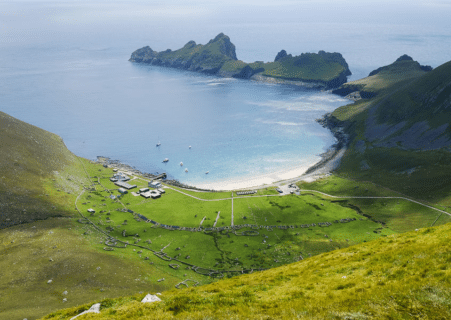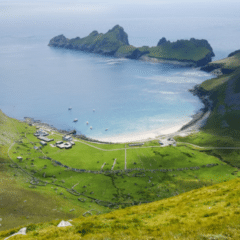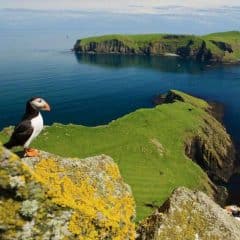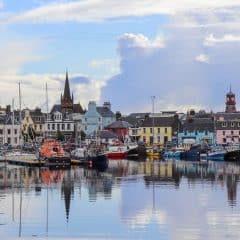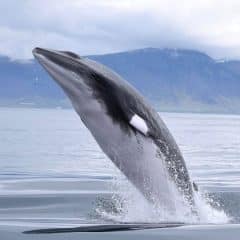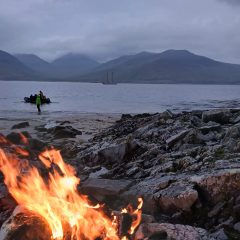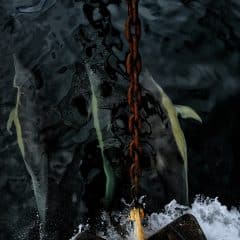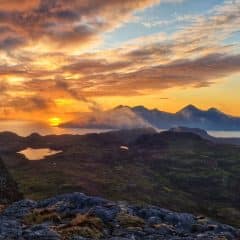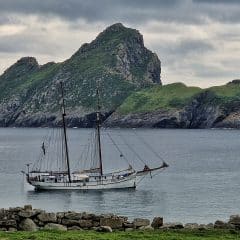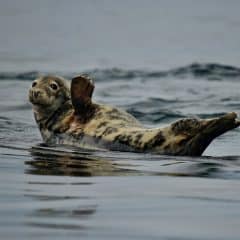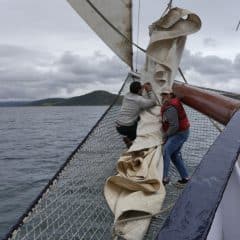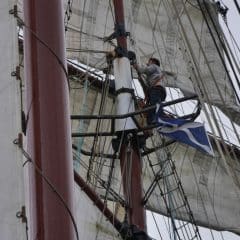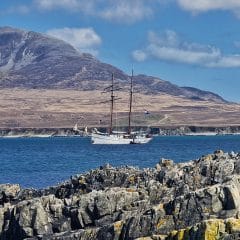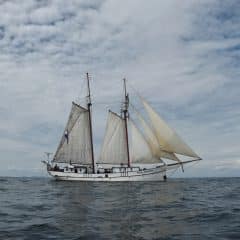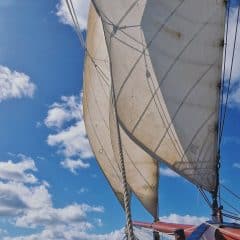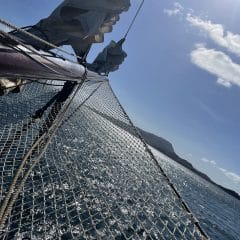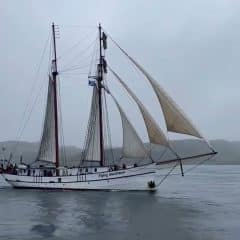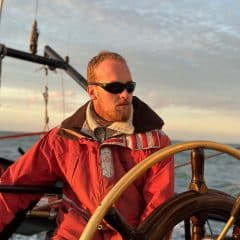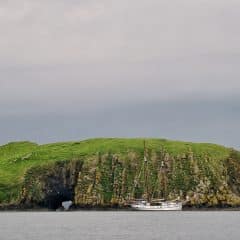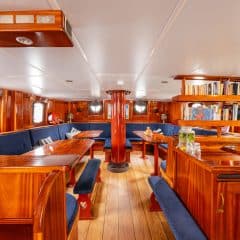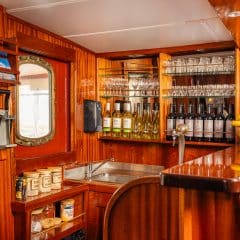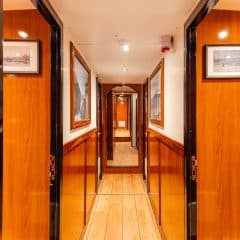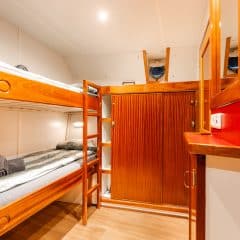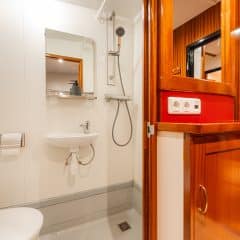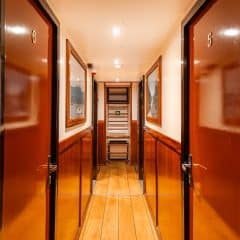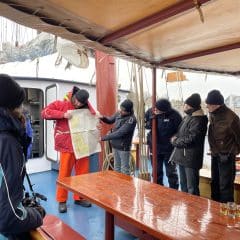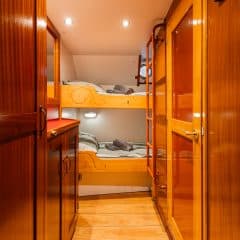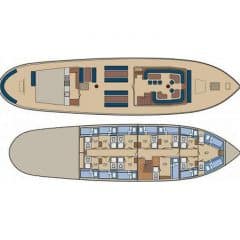| 03 – 11 August 2025 9 day’s € 1495,- A journey focused on discovering the Outer Hebrides (and St. Kilda) with the Flying Dutchman. At the far western border of Scotland is the unique group of islands that this tour focuses on: The Outer Hebrides. These islands have a long history of human habitation and are famous for nature, space, tranquility and seclusion. From the large islands such as Harris & Lewis to the smaller ones like the Monachs, the islands all have their own character and atmosphere. What could be better than discovering these (remote) islands with a Beatifull sailing ship!?Wind and tide are leading around the Outer Hebrides. There is no fixed program for this trip, but we let ourselves be guided by the elements. If the conditions are right, our main goal is to sail to the hard-to-reach St. Kilda. A place that can only be reached by ship and tells a unique story.If the sea is a bit rougher, we will stay on the sheltered side of the Outer Hebrides, after all, there is more than enough to see there! The sea around the Outer Hebrides is home to an enormous diversity of Wildlife. From Puffins to Dolphins, Basking Sharks and Whales, Keep your eyes open!During this trip we won´t be in a harbor every night, but we will also spend a few nights at anchor between the islands. The undisturbed tranquility of anchoring in remote places is a unique experience!
Embark / Disembark Embark: Ullapool, August 3 at 18.00 pm We have divided the prices into two categories because our double cabins are different in size. All prices are per person when staying in:
Included Included:
Not included:
Information & Booking
Request booking and information: Outer Hebrides Special
Outer Hebrides Special: Possible destinationsHarris and LewisHarris & Lewis is a single island of which the northern part is called Lewis and the southern part Harris, but the border is not clearly drawn. It is the largest island of the Outer Hebrides and although it forms a single island there is a clear difference between the landscape and the atmosphere. Lewis is flatter than Harris which has more mountains and cliffs. The largest town on Harris and Lewis is Stornoway in the North East, a pleasant town with shops, restaurants and museums. West of Stornoway you will find the “Callanish Standing Stones”, a Neolithic relic used during ritual activities. According to estimates, the stone circle is 6000 years old. The ‘Harris Distillery’ is known for the good Gin they make. North UistNorth Uist is relatively flat and consists largely of marshes and lakes which are an important habitat for rare bird species. Lochmaddy is the largest town on the island with about 1500 inhabitants, most of whom still speak Gaelic. You can make beautiful walks on the island, the nature here is stunning. Archaeological finds have been made all over the island, such as burial mounds, stone circles and standing stones. South UistSouth Uist is much richer in relief than North Uist with hills up to 600 meters. The eastern side of the island consists of hills and dramatic coastlines, the Atlantic side consists almost entirely of beach. Lochboisdale on the east side is the largest town on the island, where the ferry from Oban arrives. EriskayBetween south Uist and Barra lies the island of Eriskay. The land on the island is unsuitable for agriculture or cattle breeding, the inhabitants mainly lived from fishing for centuries. In 1941, the ship ‘SS Politician’, en route to America, stranded on the coast of Eriskay with 20,000 barrels of whiskey on board. In 1949, the film “Whisky Galore” based on this story was released. BarraBarra is one of the Southern most islands of the Outer Hebrides and is known for its azure blue sea, white beaches and beautiful views. Barra has the only commercial airport in the world where planes land and take off from the beach at low tide. There are daily flights from Glasgow to Barra. It is definitely recommended to walk up a hill here to see the view over the island. St. KildaThis volcanic archipelago lies off the coast of the Hebrides and consists of the islands of Hirta, Dun, Soay and Boreray. Here are some of the highest cliffs in Europe, with large colonies of rare and endangered bird species such as puffins and gannets. The archipelago has been uninhabited since 1930. People have lived on the island of Hirta for thousands of years. The community that Hirta had permanently inhabited for two millennia eventually perished at the hands of fundamentalist pastors and epidemics. In 1930 the last residents were evacuated. On land, you can walk around the abandoned village and experience what life must have been like for the residents. In several of the houses an exhibition has been set up about the families that lived in those houses. For more info click here.
|
Photos trip click for enlargement Photo's ship
click for enlargement
Photos accomodation
click for enlargement
The Flying Dutchman |
